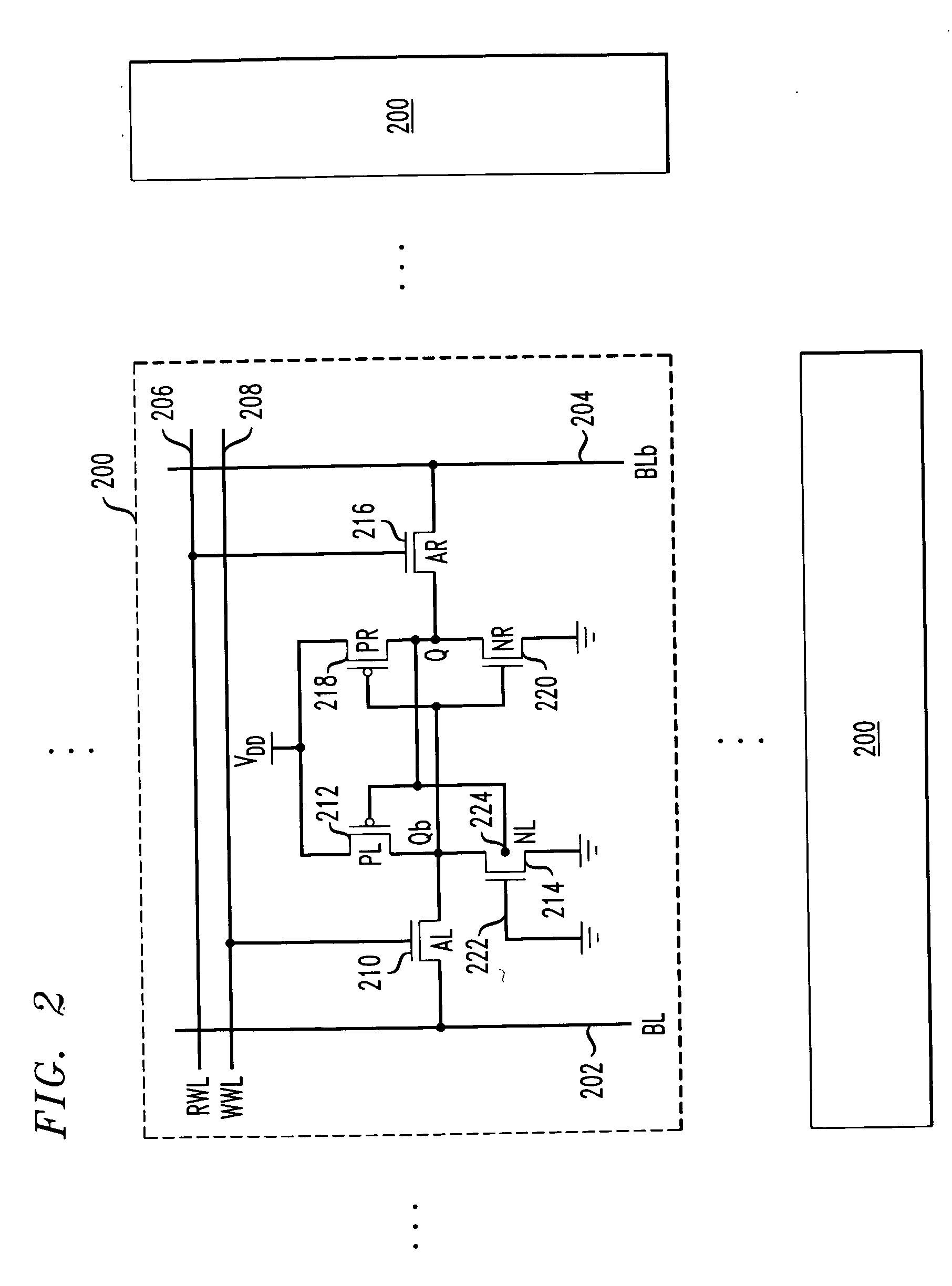Independent-gate controlled asymmetrical memory cell and memory using the cell
a technology of independent gate control and asymmetric memory, applied in the field of electronic memory circuits, can solve the problems of significant threshold voltage fluctuation, deterioration of static random access memory (sram), and poor stability of conventional sram during read mode, and achieve the effect of improving read stability
- Summary
- Abstract
- Description
- Claims
- Application Information
AI Technical Summary
Benefits of technology
Problems solved by technology
Method used
Image
Examples
Embodiment Construction
[0022] It is useful to refer to FIG. 1 and to consider the drain-to-source current (Ids) versus gate-to-source voltage (Vgs) characteristics of an asymmetrical double gate MOSFET with independent gate control. The Ids versus the front gate voltage (Vfg) characteristic is significantly different depending on the back gate voltage (Vbg). FIG. 1 depicts the Ids-Vfg curves 102, 104, 106 for, respectively the tied front and back gate, Vbg=VDD, and Vbg=ground cases. In each case, the devices have the same effective channel length (Leff=25 nm), identical front-gate and back-gate oxide thicknesses of 1 nm, and a film thickness of 7 nm. The body is undoped.
[0023] As shown in FIG. 1, we can have three different on-current values depending on the gate voltage setup. The case of the tied gates has the largest “on” current due to the coupling between the front and back gates. The case where the front gate is maintained at the supply voltage and the back gate is grounded has a larger current tha...
PUM
 Login to View More
Login to View More Abstract
Description
Claims
Application Information
 Login to View More
Login to View More - R&D
- Intellectual Property
- Life Sciences
- Materials
- Tech Scout
- Unparalleled Data Quality
- Higher Quality Content
- 60% Fewer Hallucinations
Browse by: Latest US Patents, China's latest patents, Technical Efficacy Thesaurus, Application Domain, Technology Topic, Popular Technical Reports.
© 2025 PatSnap. All rights reserved.Legal|Privacy policy|Modern Slavery Act Transparency Statement|Sitemap|About US| Contact US: help@patsnap.com



